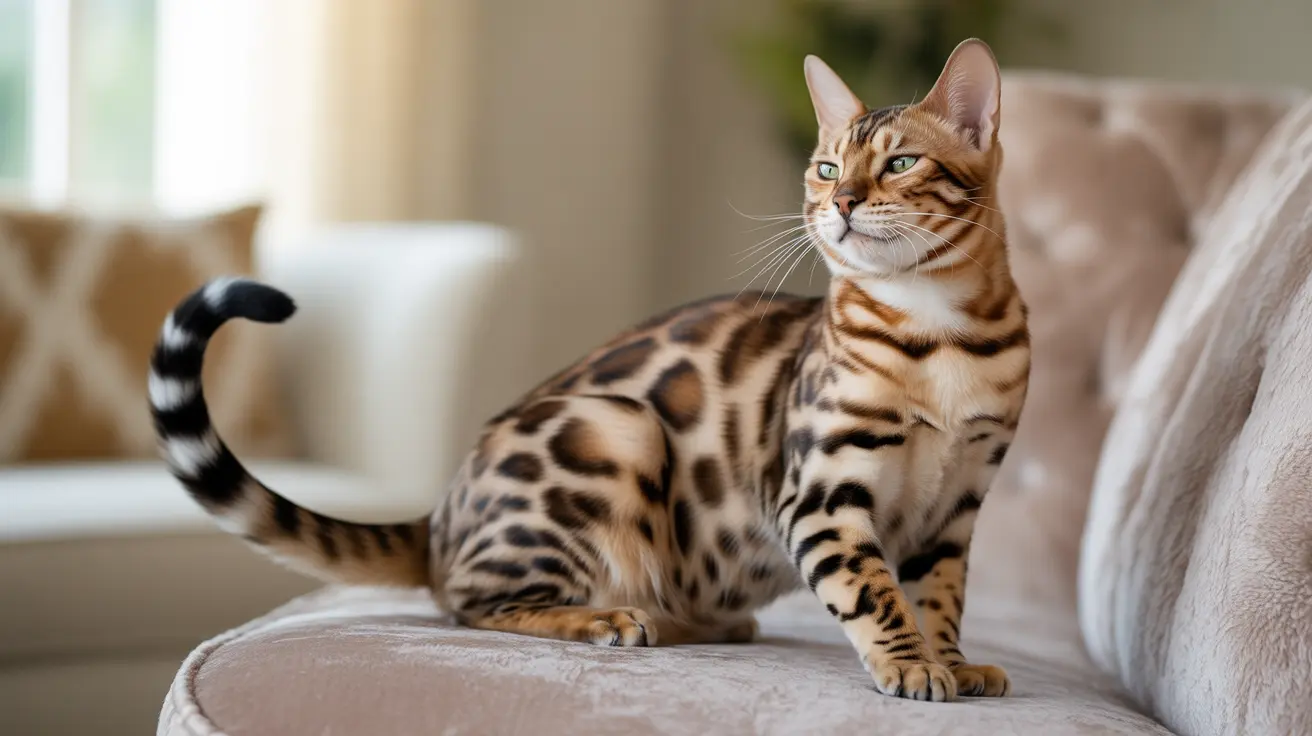The Science Behind Tail Raising in Cats
When your cat lifts their tail while being petted, they're engaging in a complex form of communication that reveals much about their emotional state and trust level. This behavior, often dubbed the "elevator butt" by cat owners, has deep roots in feline biology and social dynamics.
Understanding why cats raise their tails during petting can help strengthen the bond between you and your feline companion while providing insights into their overall well-being and emotional state.
Early Origins: Kittenhood Behaviors
The tail-raising behavior begins in kittenhood when mother cats groom their young. Kittens naturally lift their tails to allow their mothers to clean them, creating a positive association that carries into adulthood. This early experience explains why adult cats often recreate this gesture when receiving attention from their human caregivers.
The Trust Signal: What Tail Raising Means
When a cat raises its tail during petting, it's displaying a remarkable level of trust. By exposing their vulnerable rear area, they're communicating that they feel safe and comfortable in your presence. This gesture is particularly significant given that cats are both predators and prey animals in nature, making displays of vulnerability meaningful indicators of trust.
Physical Pleasure and Neural Responses
The base of a cat's tail contains a high concentration of nerve endings, making it particularly sensitive to touch. When you pet this area, it can trigger an automatic pleasure response, causing your cat to raise their tail and push back against your hand. This reaction is similar to how cats respond to particularly enjoyable scratching or petting in other sensitive areas.
Social Bonding and Communication
Tail raising serves as a crucial element in feline social interaction. When cats greet each other in friendly circumstances, they often approach with their tails held high, sometimes with a slight curve at the tip. This same behavior is extended to trusted human companions, indicating that your cat views you as part of their social group.
Different Types of Tail Raises
Not all tail raises are identical in meaning. A straight-up tail with a slight curve or hook at the end typically indicates friendly greeting and happiness. A tail held high and quivering often signals extreme pleasure or excitement. However, if the tail is raised but puffed up, this could indicate fear or aggression.
Health and Behavioral Considerations
While tail raising during petting is generally a positive sign, any sudden changes in this behavior could indicate health issues. If your typically responsive cat suddenly becomes reluctant to raise their tail or shows signs of discomfort when touched near the tail base, it's worth consulting with a veterinarian.
Frequently Asked Questions
Why do cats raise their tails and rear ends when being petted?
Cats raise their tails and rear ends during petting as a sign of trust and pleasure, stemming from kittenhood grooming experiences. This behavior indicates they feel safe and are enjoying the interaction.
What does it mean when my cat raises its tail with a slight curve or quivers during petting?
A curved tail raise typically indicates friendliness and happiness, while quivering can signal intense pleasure or excitement. Both are positive signs that your cat is enjoying the interaction.
How is a cat's tail position connected to its mood and communication?
A cat's tail position is a key indicator of their emotional state. An upright tail usually signals confidence and happiness, while low or puffed tails can indicate fear or aggression. The position helps cats communicate their feelings to both humans and other cats.
Can a female cat raising her tail while being petted indicate she is in heat?
Yes, female cats in heat may raise their tails more frequently and exhibit other behaviors like increased vocalization and restlessness. However, tail raising during petting is also normal behavior unrelated to heat cycles.
How can I tell if my cat is enjoying petting or becoming overstimulated based on tail movements?
Watch for signs of overstimulation such as tail twitching, skin rippling, or sudden tail lashing. A relaxed, raised tail indicates enjoyment, but if these other signs appear, it's best to give your cat a break from petting.
Understanding Your Cat's Communication
Learning to read your cat's tail signals is crucial for building a strong relationship with your pet. When your cat raises their tail during petting, they're showing you their trust and affection. By respecting their boundaries and responding appropriately to their signals, you can maintain a healthy and loving bond with your feline friend.






